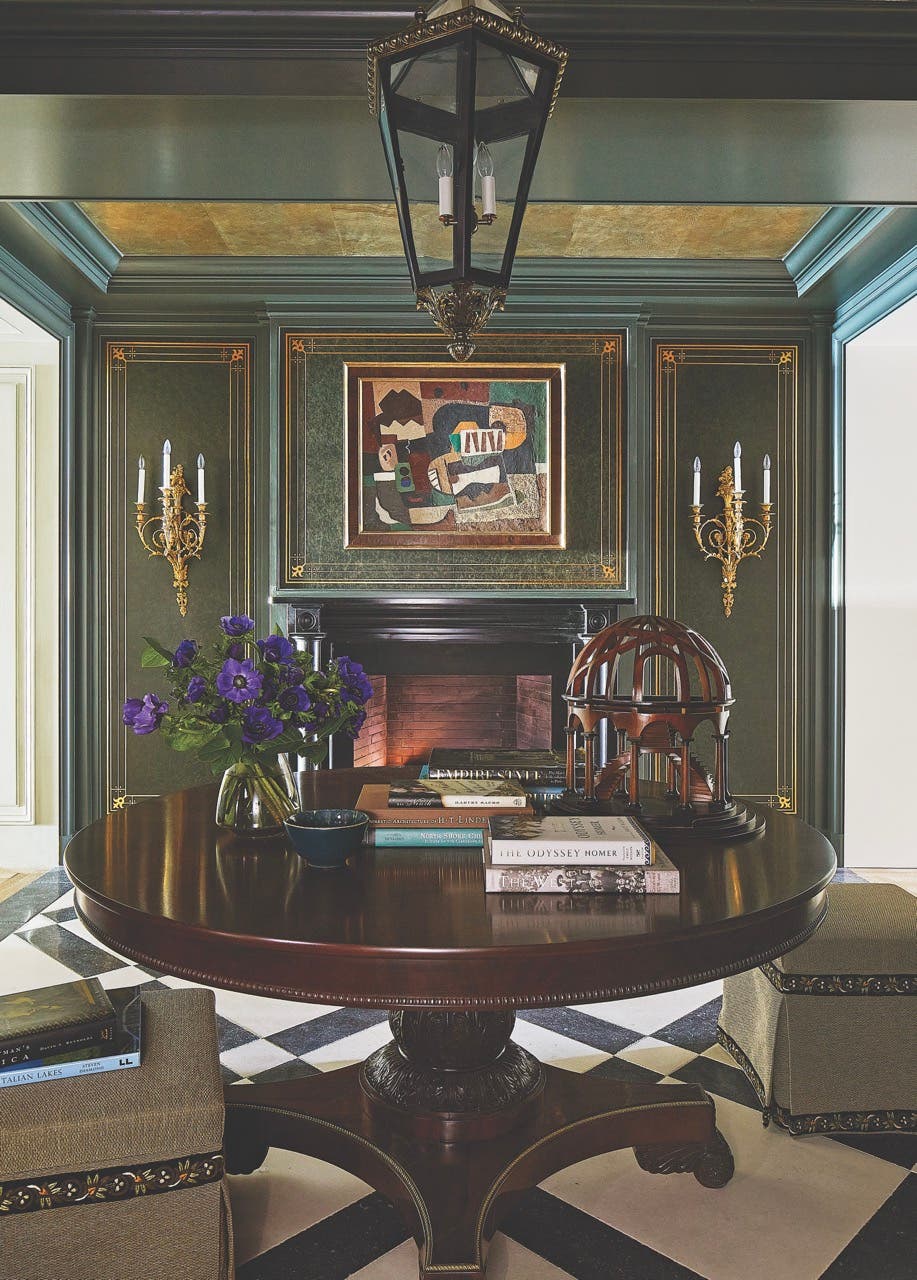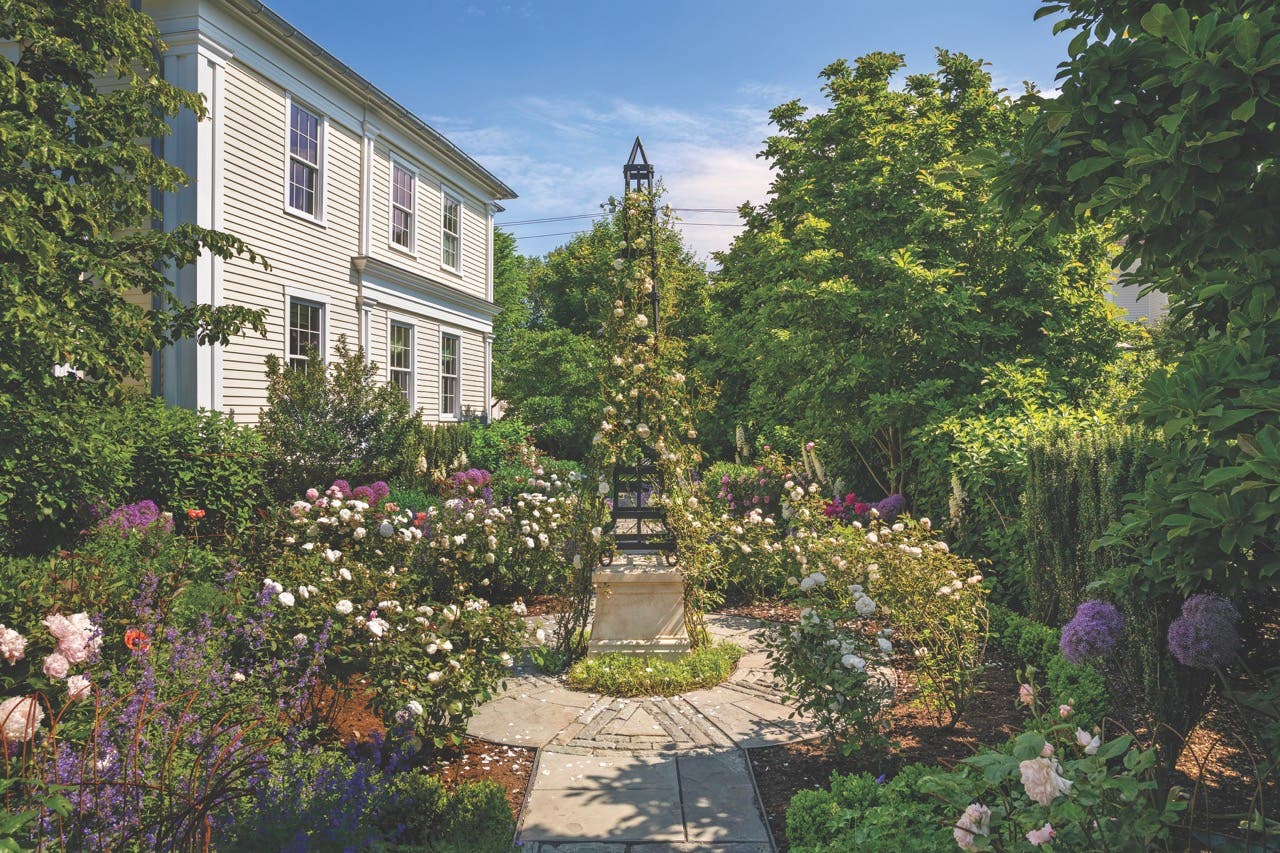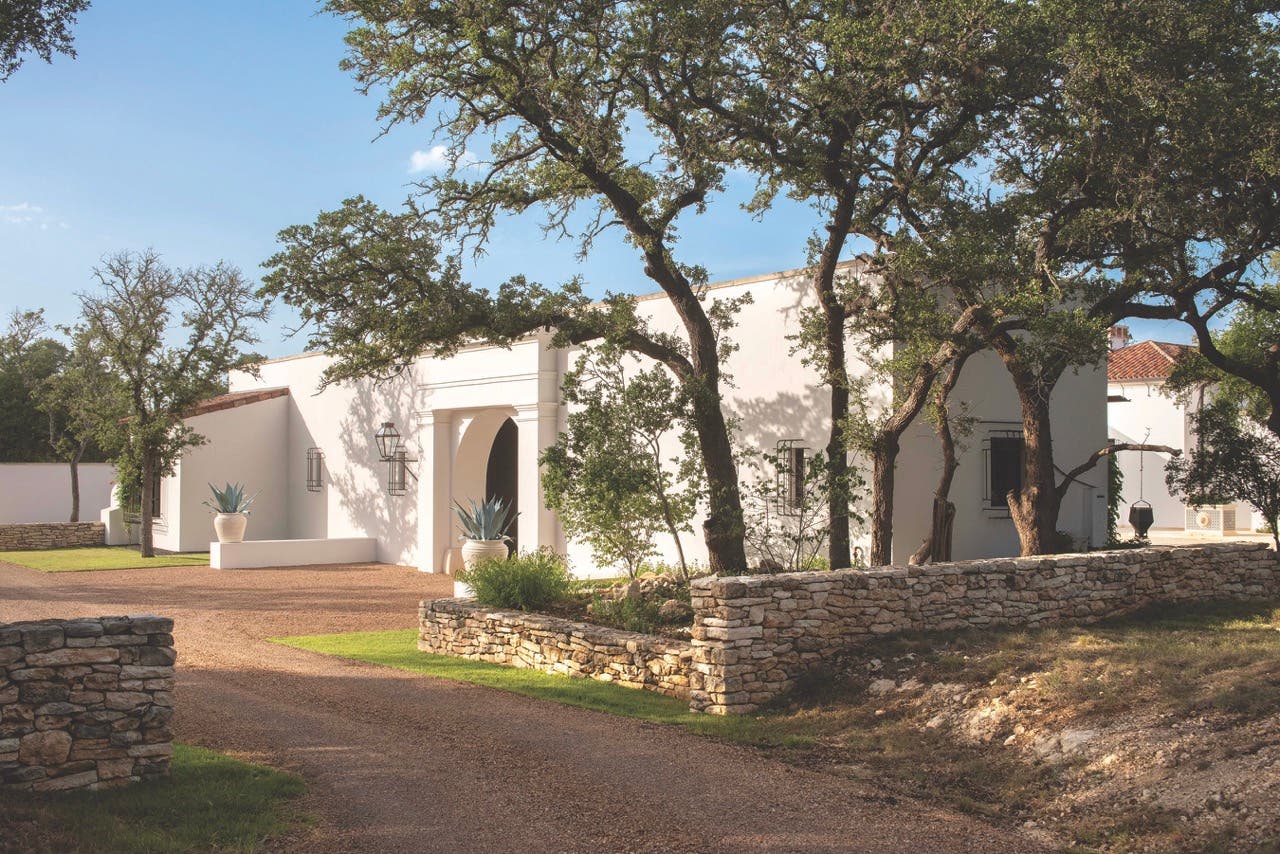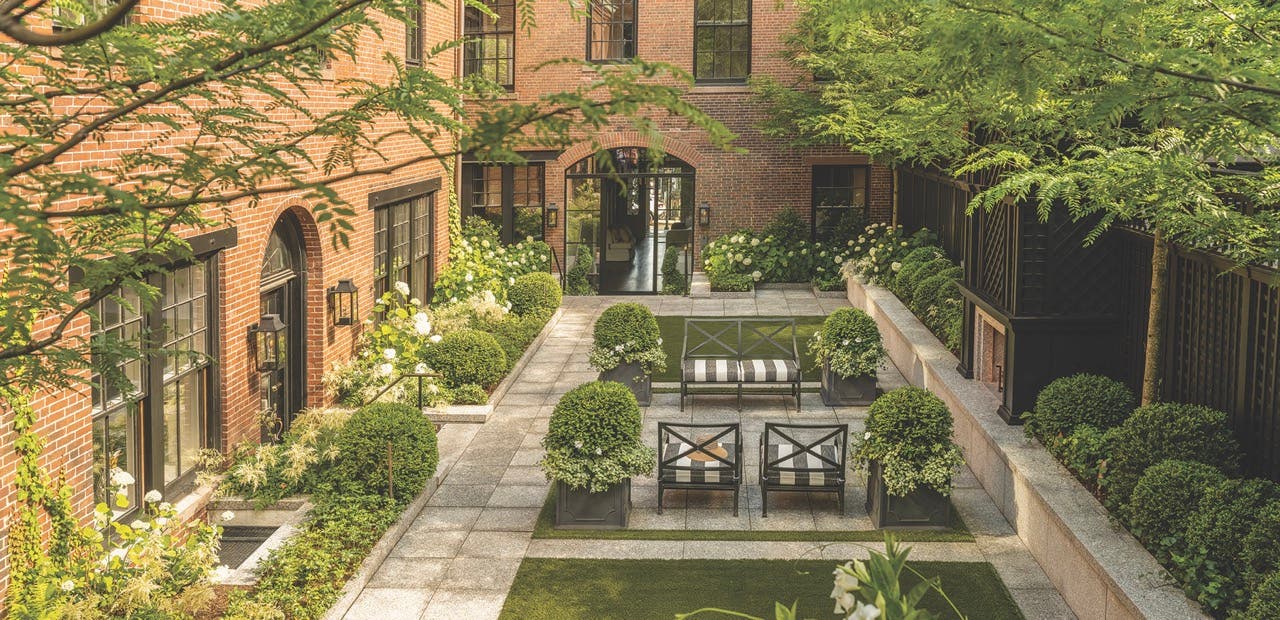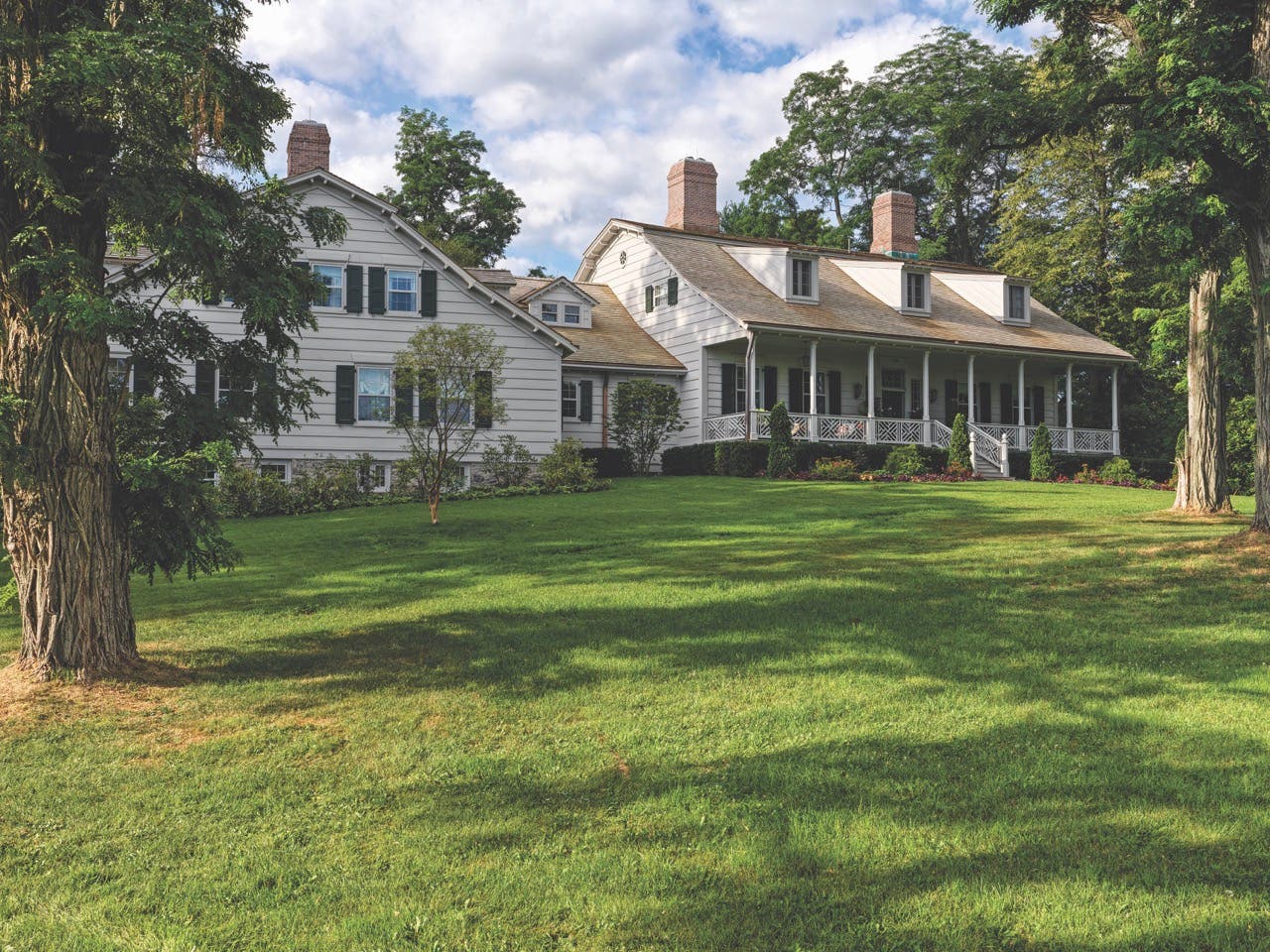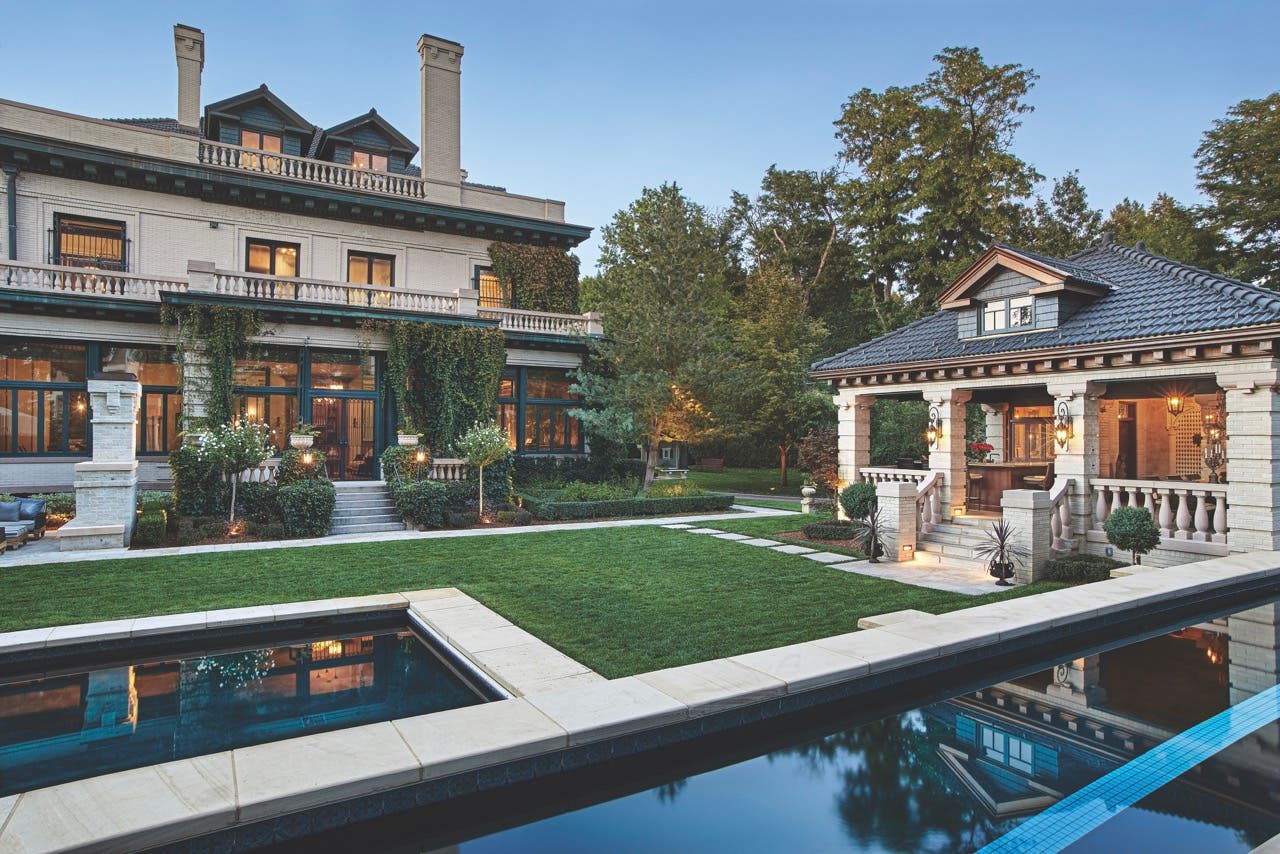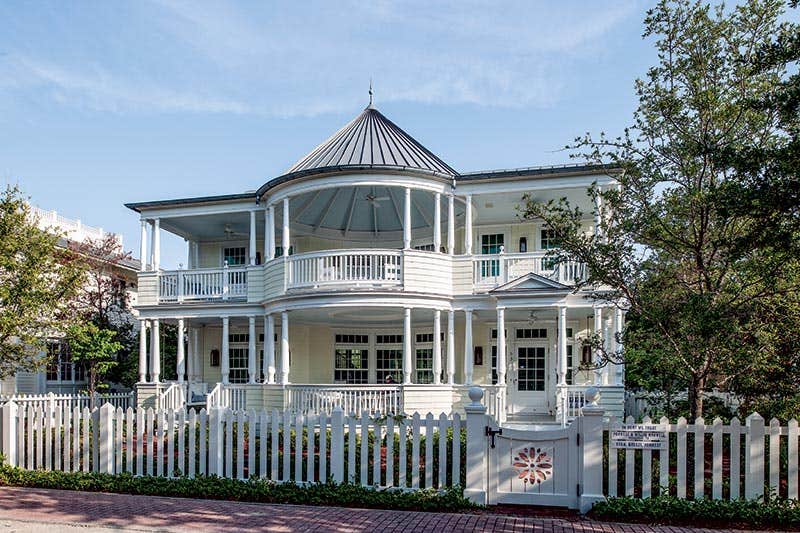
Palladio Awards
A New Twist On A Double-Height Porch in Seaside, FL
2014 PALLADIO AWARDS
New Design & Construction – less than 5,000 sq. ft.
Winner: Curtis & Windham Architects, Inc.

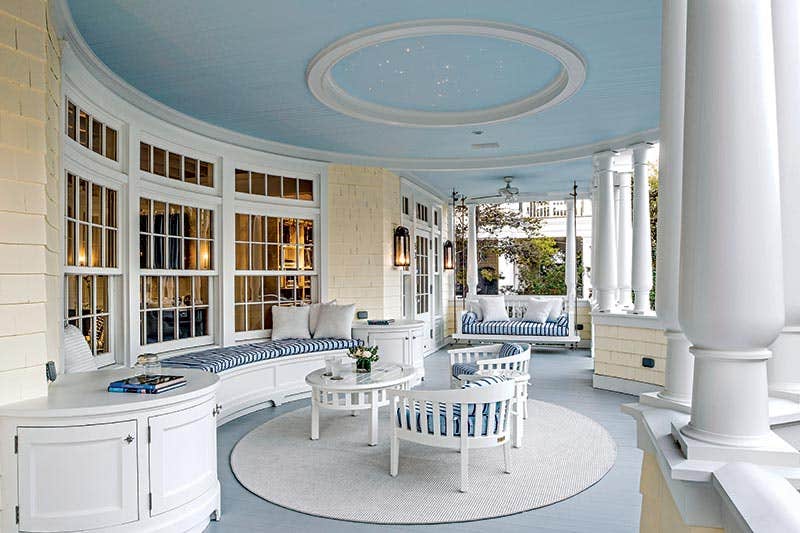
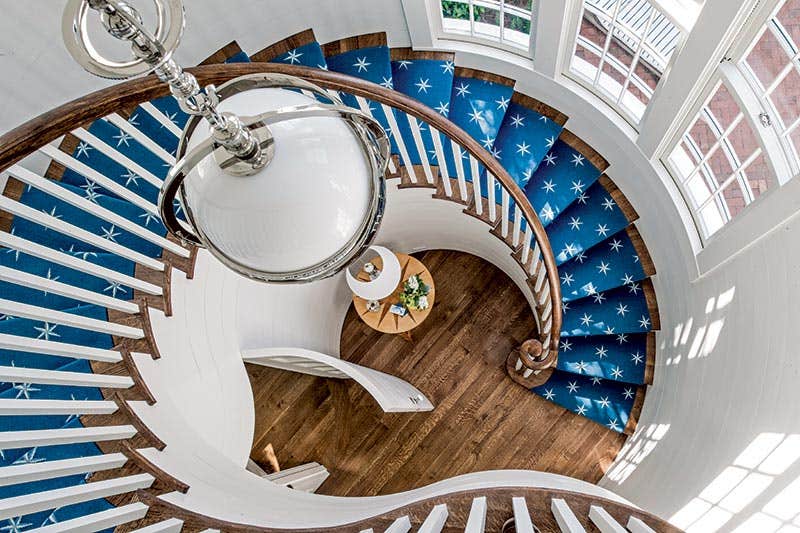
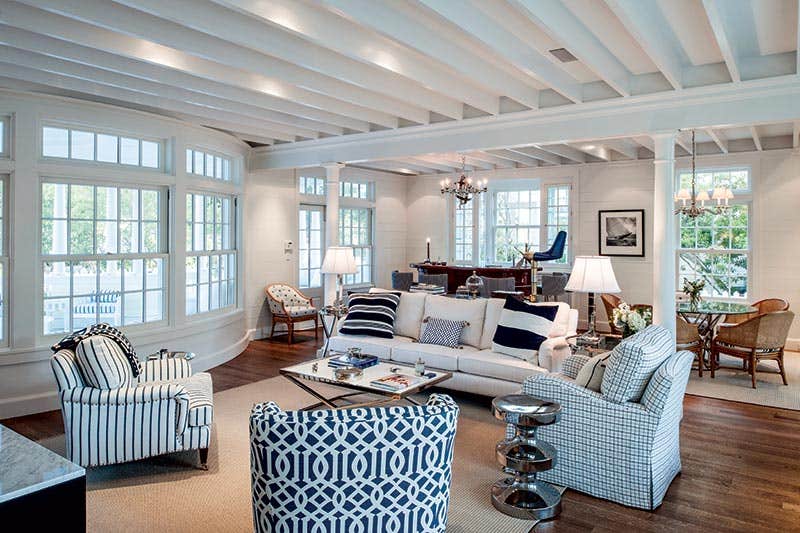
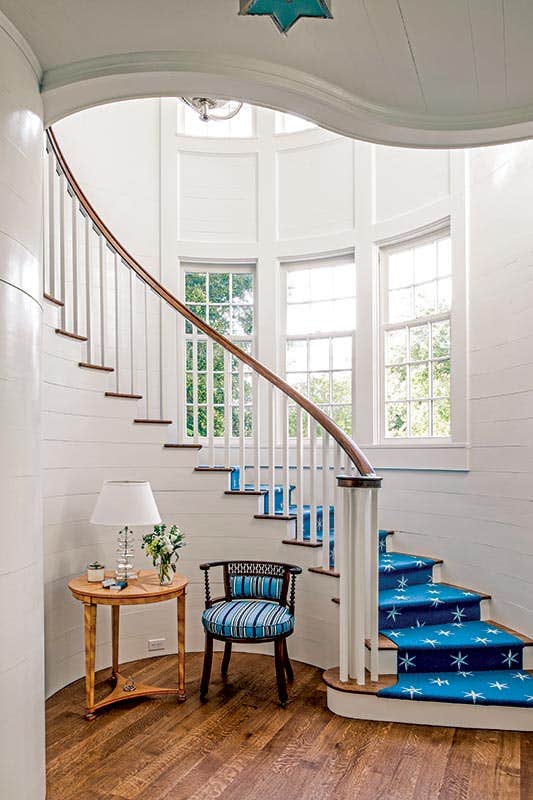

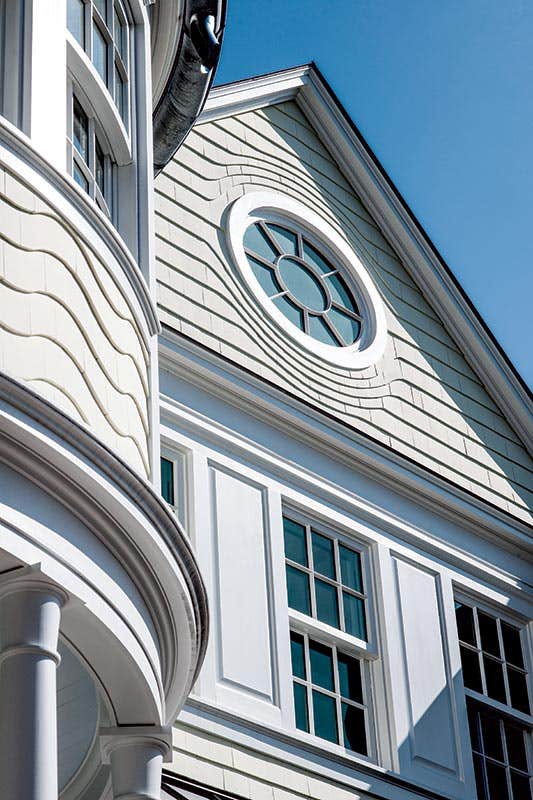
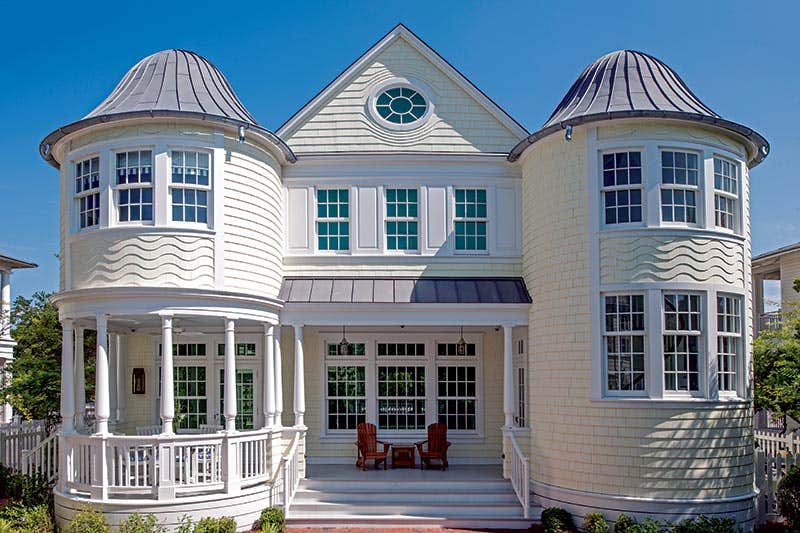
Project: Seaside Avenue Residence, Seaside, FL
Architect: Curtis & Windham Architects, Inc., Houston, TX; William Curtis and Russell Windham, principals
By Annabel Hsin
The master plan of Seaside, FL, one of the country’s first New Urbanist towns, designates Seaside Avenue as its most prominent street. As part of its design code, each house on the avenue is required to build a continuous double-height porch that faces the street. Throughout the years, this has rendered a homogeneous effect of similar buildings and porch treatments on undifferentiated façades. While the code was put in place to maintain a certain standard and sense of continuity in Seaside, it also encourages range and expression as each home is required to be stylistically different from the next.
In 2010, when the clients of Curtis & Windham Architects of Houston, TX, asked them to design a vacation home on the last un-built lot on Seaside Avenue, they saw the porch stipulation as an opportunity to explore a different approach. The firm had previously designed a house for the clients in the Houston suburbs and was given pretty much carte blanche for this project.
“We looked back at 19th-century architecture that was built up and down the East Coast for Victorian-esque forms,” says principal William Curtis. “We looked particularly at a house in Newport, RI, called the Isaac Bell House for inspiration in curvilinear forms. We didn’t want a big long rectangular porch so we incorporated an elliptical form in the middle that we thought harkened back to the era we studied. Our design extended 5 ft. beyond the building line and we were given the variance to build it. That is the town’s way of saying, ‘we think this is a neat idea and it is worth doing.’”
A white picket fence at the property line encloses a small front yard and in-ground bubbler fountain where brick pavers lead to the double-level porch. Both levels feature an elliptical outdoor room set between two rectangular spaces. The lower level room functions as a living room and is furnished as such complete with a built-in bench. Gas lanterns, fabricated by New Orleans, LA-based Bevolo Gas & Electric Lights, and swinging benches create a welcoming atmosphere in the rectangular spaces for the entries into the house. A pediment frontispiece differentiates the main entry and provides some asymmetry on the front elevation.
The upper level is relatively private with a 12-ft.-dia. daybed at the center of the room and is flanked by seating areas on either side. Above, exposed ceiling joists draw attention to the cone-shaped gable covered with a lead-coated copper roof supplied by Morrell Architectural Systems, Inc. of Tampa, FL. The Doric entablature on both levels is complemented by solid wood turned columns designed by the firm and custom manufactured by E. F. San Juan of Youngstown, FL; the company also fabricated all of the intricate curved and bent wood detailing for the project.
“In the center of every other porch column is a steel tube that is part of the structural anchoring system that will keep the house intact during a hurricane,” says Curtis. “We designed the columns to be narrow at the top with a more abstract but traditional capital form. They are long and bulbous toward the bottom to imply load but they taper and land on a small base. They are expressive of the loads they carry like someone hauling a heavy load on his back who can’t stand vertically.
“Less obvious, is that the structure behind the porch is essentially a simple box,” continues Curtis. “The intention was to have the house make a statement with its double-height porch from the get-go, with finer details where necessary. We tried to temper the fanciness of the columns and entry frontispiece with cedar shingles, which makes for a simple and humble wall surface that gives texture, but we used them in a refined way by creating patterns and curved forms.”
The first floor of the interior is a loft-like space with an L-shaped wall positioned to create a foyer for the entry and to section off the kitchen. “The clients had a desire to build a beach house, meaning a simple, wooden construction and they just had no need for separate rooms,” says Curtis. “They entertained a lot so a large entertaining room with the kitchen tucked away for privacy suited them.”
The large room is separated into three main spaces – the living room, bar and dining room – by four columns with simple Classical detailing. Dramatic focal points elevate the otherwise simple white interior of exposed ceiling joists and horizontal board-clad walls; white oak floors throughout provide added cohesion. The living room features large curved windows (manufactured by Steward Brannen Millworks of Regent, GA) that bow into the space and are on axis with windows overlooking the back porch and pool in the yard. Inspired by vintage boats, the bar is built of mahogany and is finished with 18 coats of clear lacquer. The dining area is adjacent to one of two towers on the rear elevation that houses the nautical-themed curved stairs to the second floor; a powder room is tucked underneath the stairs.
“We wanted the horizontal boards that go from the ground floor all the way up to the ceiling of the second floor to line up in a certain way,” says Curtis. “And we thought it would be interesting if the boards evolved off the wall and became the risers on the stair treads. It gave the sense that the stairs were rendered from the wall into a curved form as opposed to something that was added on.”
Adjoining the living room, the kitchen features open shelving, simple cabinetry, a paneled sub-zero fridge, a porcelain-chrome stove and a butcher-block island at the center, the latter of which was supplied by O. B. Laurent Construction of Santa Rosa Beach, FL. The highlight of the room is the glazed lava stone countertop imported from France and supplied by Pyrolave USA of Raleigh, NC. A French door opens to the outdoor dining porch located on the bottom level of the second tower.
“The curvilinear forms on the front elevation become two solid, tower-like structures at the rear to render a different composition,” says Curtis. “We topped them with bell shapes because we wanted them to be more dynamic. In a lot of ways, the rear elevation is stronger than the front.”
Most of the plots on Seaside Avenue were sited asymmetrically to prevent homogeneity and this property was no exception. While this allowed for an outbuilding at the rear, which functions as a guest house and pool storage, the team had to find a way to reconcile the structure with the main house – and an elliptical pool was the solution. The outbuilding’s small scale and whimsical maritime details, such as the oval window reminiscent of ship portholes and the nautical insignia, defers to the main house even though both were built of the same materials.
Inside, a sitting room above the rear porch leads to the master suite, which is styled similarly to the rest of the home. In contrast, the walls in the guest bedroom suite are paneled with fir in a clear finish. Both bedrooms have access to the upstairs front porch and daybed.
“There were some great architects working in Seaside during the early days who really explored what these houses could be like,” says Curtis. “Fast forward 25 years, a lot of simple and unexpressive fabric houses have been built. We came along and decided that we would pick up the mantle by those great architects and design an outstanding house with a lot of spirit and energy because we are beneficiaries of their good work.” Thus far, the house has garnered plenty of community interest as people are constantly knocking on the homeowners’ front door asking for a tour.



